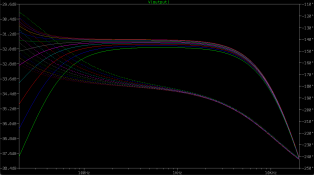Trying to use @mihi_fuchs's awesome adaption of the U87 Ai circuit with different capsules, I wonder how far we can safely deviate from the original feedback capacitor values?
So for the high-frequency roll-off, Neumann went from 220pF (C6) to 160pF (C105) in the U87A, which meant slightly more highs.
Has anyone tried significantly different values to accomodate, say, a CK12-style capsule?
Will, for example, 47pF just lead to virtually no roll-off? What do you guys think - how low can we go? Will there be any side effects?
Same goes for the (fixed) low-cut, which I think is an often neglected quality of the U87. (Not talking about the switchable low-frequency roll-off here.)
Neumann went from 33nF (C5) in the vintage U87 to 47 nF (C104) in the Ai, which meant slightly more bass.
Again, will, for example, 330pF just 'switch off' the low-cut? How far can we go? Any experience to guide me before soldering and measuring for hours?
(I have a vague memory someone here might have simulated that in the past, but I can't find anything related.)
Thanks for any advice to the good people on this amazing forum!
Matthias
So for the high-frequency roll-off, Neumann went from 220pF (C6) to 160pF (C105) in the U87A, which meant slightly more highs.
Has anyone tried significantly different values to accomodate, say, a CK12-style capsule?
Will, for example, 47pF just lead to virtually no roll-off? What do you guys think - how low can we go? Will there be any side effects?
Same goes for the (fixed) low-cut, which I think is an often neglected quality of the U87. (Not talking about the switchable low-frequency roll-off here.)
Neumann went from 33nF (C5) in the vintage U87 to 47 nF (C104) in the Ai, which meant slightly more bass.
Again, will, for example, 330pF just 'switch off' the low-cut? How far can we go? Any experience to guide me before soldering and measuring for hours?
(I have a vague memory someone here might have simulated that in the past, but I can't find anything related.)
Thanks for any advice to the good people on this amazing forum!
Matthias








